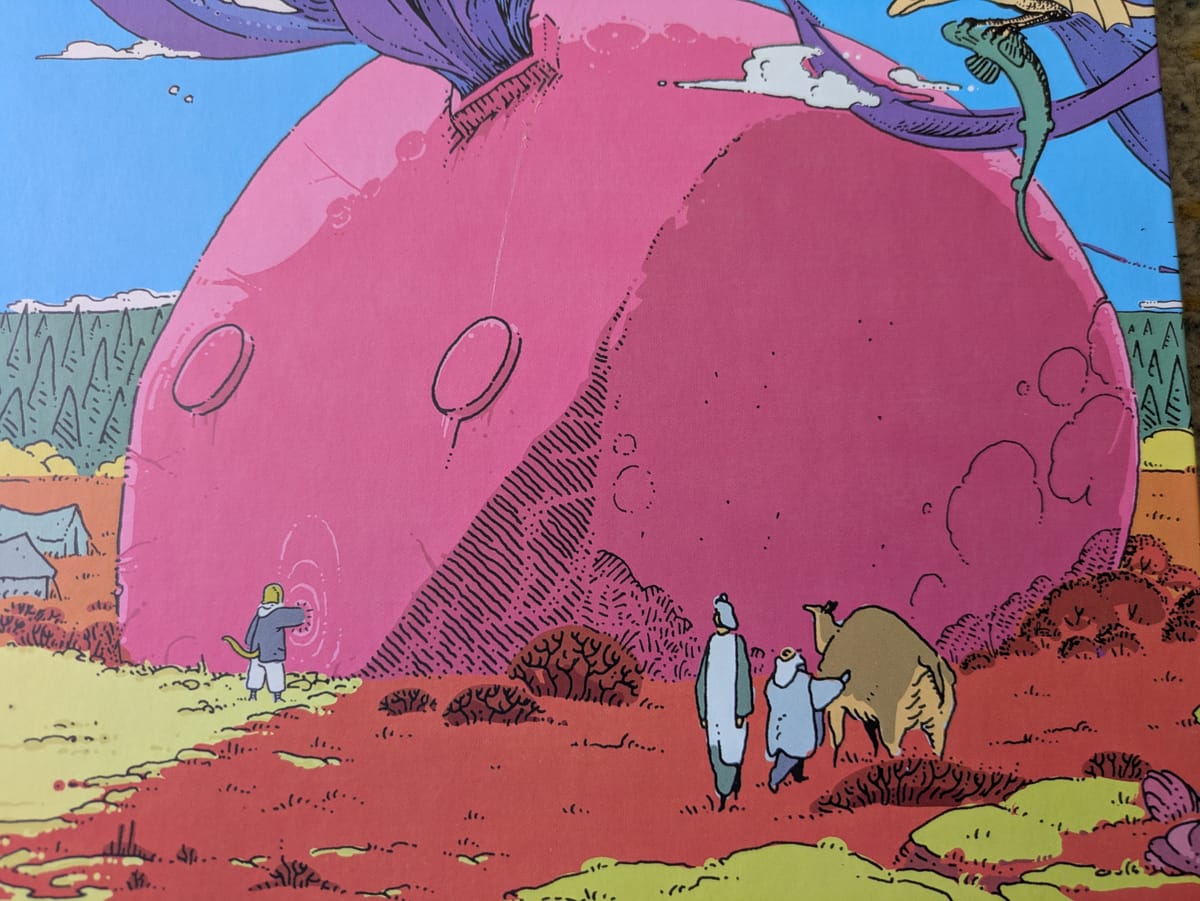
Ultraviolet Grasslands redefines the RPG adventure, honoring its many influences even as it surpasses them to become something new unto itself. At once an OSR system, setting, and adventure, UVG’s second edition makes exploration and discovery both gameable and approachable in a surreal, dangerous setting. The book is, principally, a map and set of tools for travelling from the cultural center of the Decapolis, to the treasures and mysteries of the Black City. Between the two are the Ultraviolet Grasslands; psychedelic and mutating, the Grasslands are full of encounters both random and planned. To make the destination worthwhile, UVG builds its strengths on the journey. Much of its toolkit is devoted to the details of running your caravan, keeping it supplied, repaired, and fed as you make your way south. The core of the game is long-term exploration, seeing you make your way across the map over weeks or months. It form an enormous point-crawl driven by your choices and discoveries, with dark mysteries to behold as you make your way across the landscape. With so many ideas and so much content, the infinite replayability could make this one of the last RPG books you’ll ever need to buy.
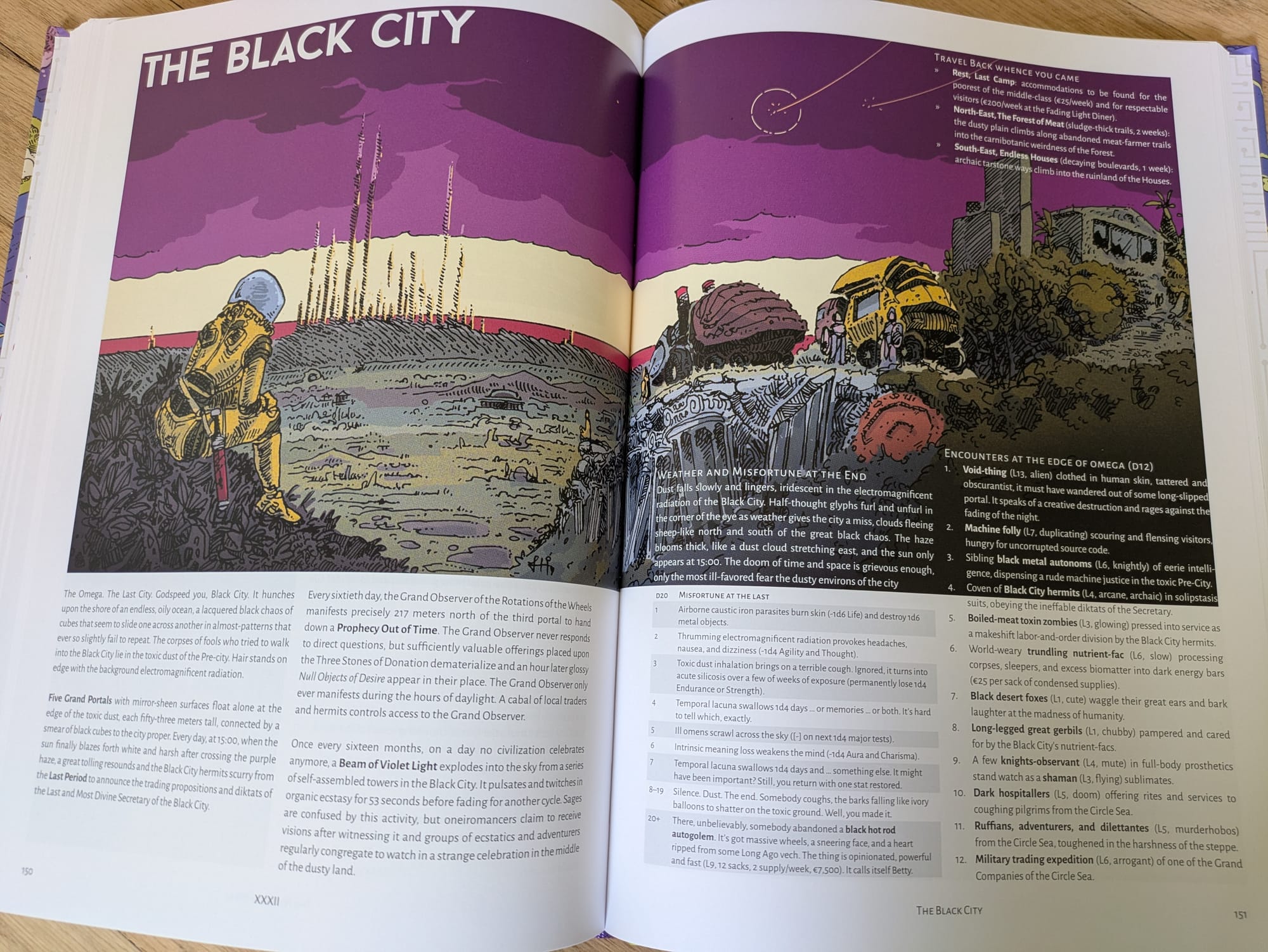
The second edition is essentially a strict upgrade to the first. That being the case, I won’t be comparing the editions with any detail. If you want to get into UVG, do it with this edition. The setting is a mix of Moebius’ Franco-Belgian acid surrealist future with Ghibli’s somber respect for nature, and more than a little Dying Earth for weirdness and tone. I know I just threw a lot at you, but the fastest way to understand the settings and its influences would be to look at some of the book’s art. That art, among its best selling points, speaks for itself better than anything I could say. Full of color and detail, the illustrations communicate everything about the book’s philosophy and setting. It’s beautiful and evocative, but not particularly easy to parse.
UVG’s greatest strengths and weaknesses come from the same source: its unrelenting, creative weirdness. Reading through this fever dream of a textbook is a confounding, near-religious experience. It’s not the strangest I’ve come across, and is gameable at the end of the day, but the setting is so bizarre and foreign that it will take an experienced GM to bring coherence to these adventure seeds. The prose is so dense and so evocative that you can get lost finding gameable material. Numenara’s bizarre future comes to mind, though with more focus here, there is still an ethereal, dreamlike quality to the setting that makes it hard to break down into RPG terms. All it needs to be perfect is to switch up some of the verbose prose with more technical GM tips. “Here you find X. It does Y.” Playing this game can certainly help you get there, and it helps that things get slowly weirder over time, until you reach the Black City, where time and space are warped by the mysteries within.
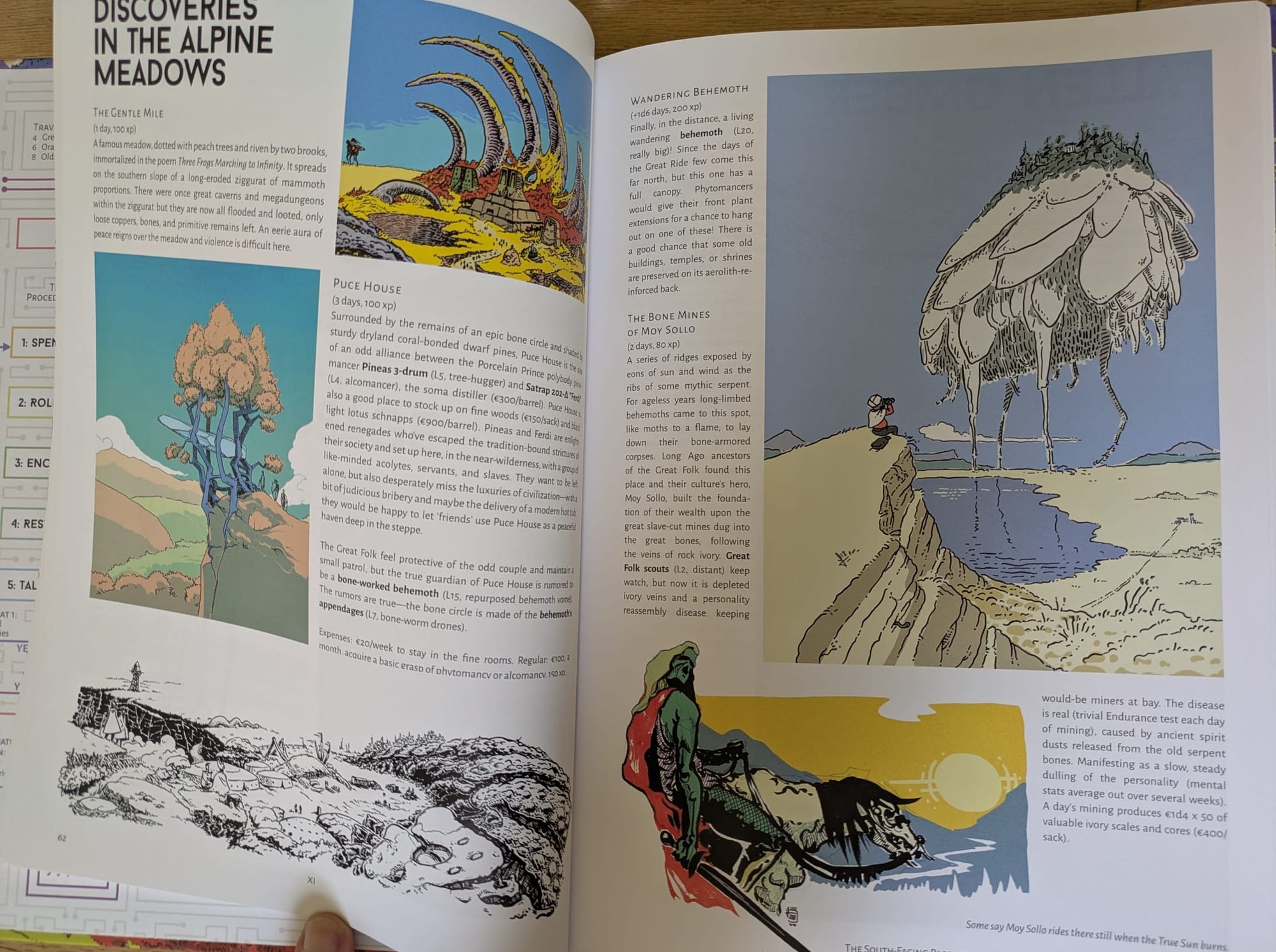
The other faltering point is in the layout and organization. Again, it’s mostly great. The book has a more than usable table of contents and index. The front cover has a comprehensive flowchart of the Caravan rules, with equipment and common tools/generators at the back. But the breakdown of base mechanics and character generation info is scattered among a few different sections, asking you to bound around the book to get your head around the rules. There’s nothing clear to differentiate the book’s sections, so you’ll need to spend a lot of time flipping through to find specific references. There are TONS of tools here, for so many aspects of the game. Features for players, NPCs, locations, items, mysteries, events, weather…I could go on, and on, AND ON for all the resources you can find here. Is that a problem? No, but it does make navigation difficult as you flip through the many reference pages.
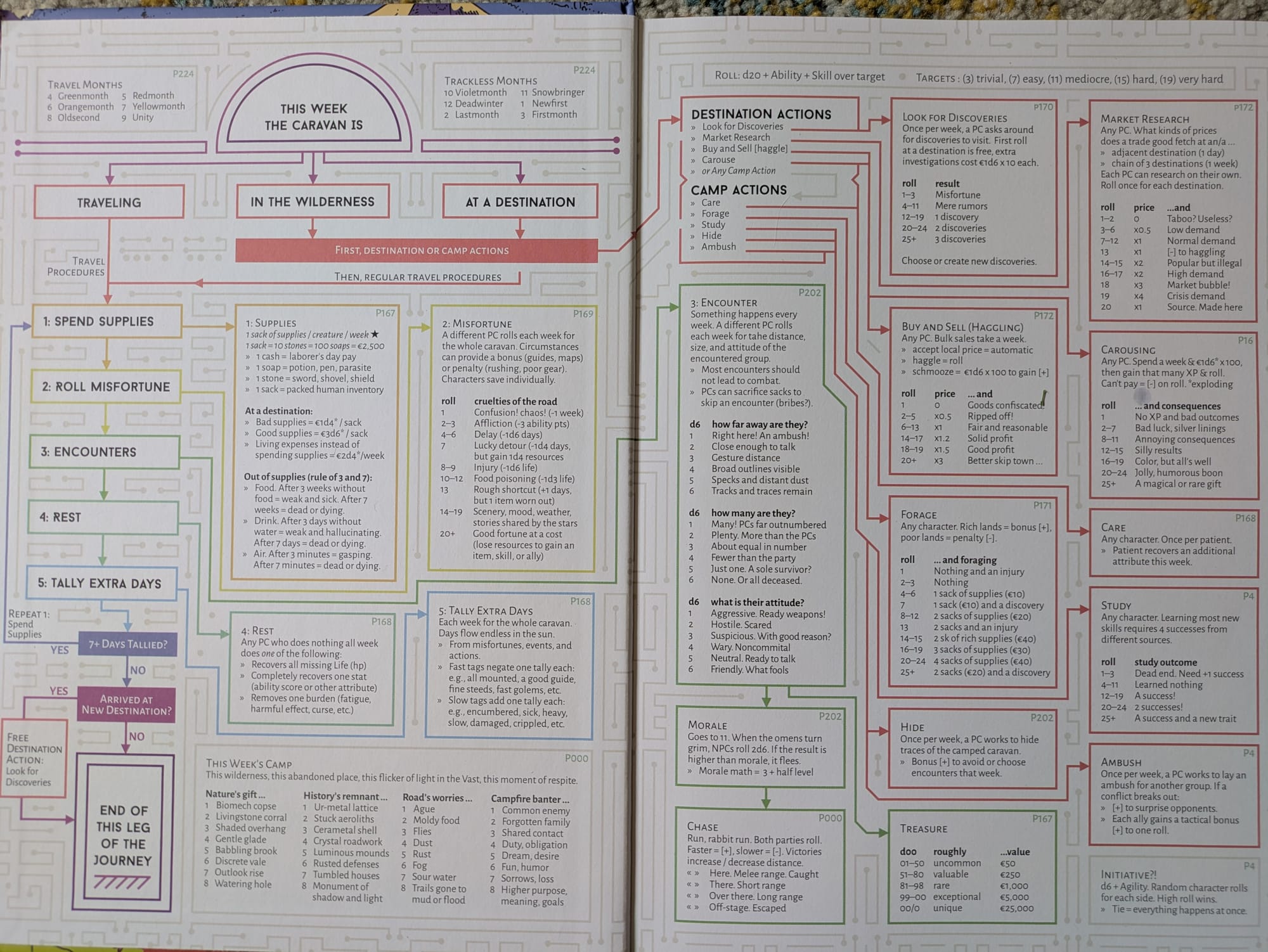
There is a Glossary, but it isn’t easy to find. Most tools aren’t. Looking for the weather table? It’s right near Histories of Forgotten Times and the table for Other Gates, portals through to other lands. The spells are between d100 strange items and Biomagical Corruption. I can’t tell you why. Some of the PC rules are in the bestiary, where you learn lore about other races while you learn about how they can influence PCs of those races. These resources are great on their own, but together they make the dense text a lot to make your way through. That makes things worse for players trying to understand things. Who are they in this setting? How do they fit into the factions? What do they actually want? Answering those questions takes some soul searching and a lot of page flipping.
Those rules are pretty standard OSR. Six attributes, d20+modifier roll over, with a few small twists. Again, the book speaks for itself. The page below contains the most salient description of the system (at least its main features) for players. There isn’t much to differentiate it from other OSR at first, and the system may falter by being too simplistic. For characters, it doesn’t bring much to the table on its own, and encourages using your preferred system. This game is about the events more than the rules.
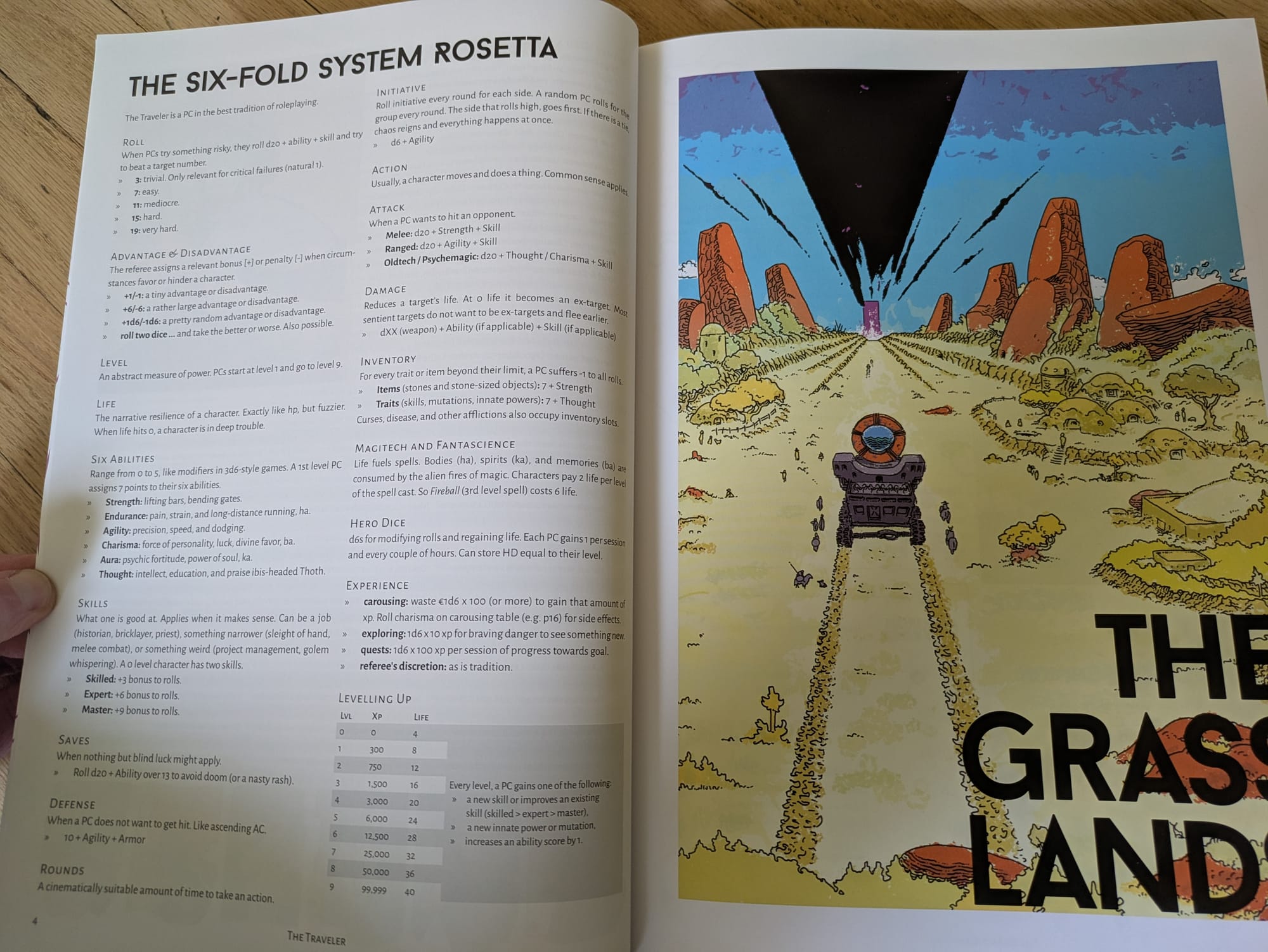
The real differences show themselves as you explore. The meat of this game is managing your caravan. Your Financier foots the money to get you started, and you’ll make your way through the Grasslands to find treasure and sell it to repay that loan. You’ll then use the profits to venture further towards the Black City. This is where UVG focuses on what most other games gloss over: the details of the journey. Encumbrance, supplies, and days spent on the road get handwaved at most D&D tables. Here, those details and the way they interact with the setting’s encounters are the focus of the experience. You may never want to make it to the Black City, the finale of the game, as you find yourself enamored with quiet evenings on the road.
Prepping your next session usually consists of reading through the next location and making a few random rolls. The many random tables make this something you can run on the fly, but with so many references to other sections and so many ideas to unpack, it’s more than advised to spend some time digesting the things being thrown at you. I’m not a solo gamer, but I’m sure the tools at your disposal for road events and their impacts on the caravan could easily make this playable for one person with imagination and time. If nothing else, this is a great read. Put on Dark Side of the Moon, light up some…incense, and flip through to some random locations. From there, a good evening is guaranteed.
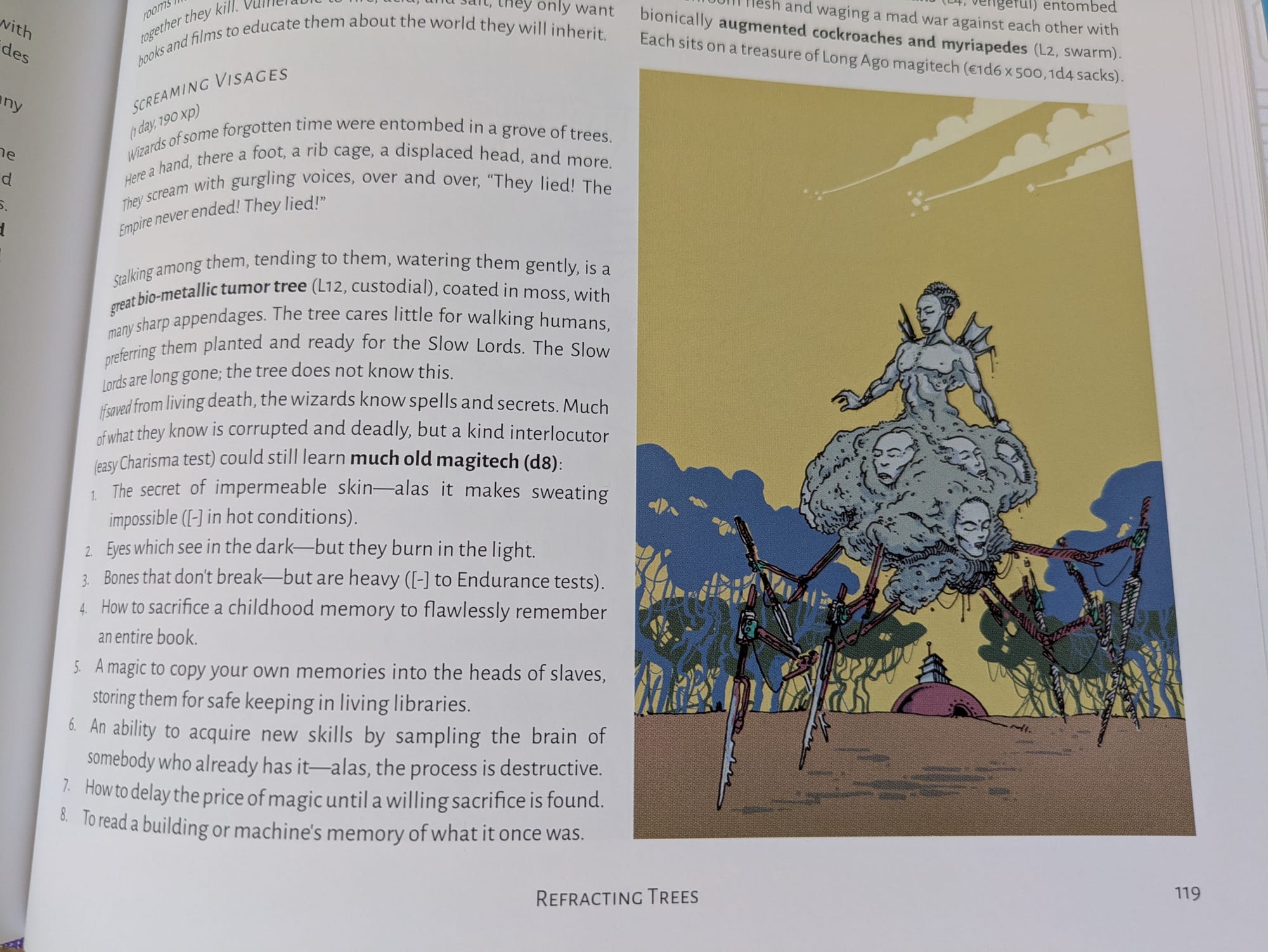
But there I am getting enamored with the vibe, something easy to do with a book like this. Let me take a moment to get down to more mundane details. The book is a touch under 250 pages, with a hard back and good binding. The first 163 are locations, adventure seeds, and the map itself. The rest are tools for other details, like the caravan, enemies, items, weather, and lots of small but substantial details to fill out the game. I have one issue with the presentation: I wish the pages leaned more on the magnificent artwork. Almost exclusively, the book is made up of white pages with blocks of text in or around the setting’s artwork. If some of those pieces were integrated more with the content, it would be easier to navigate and communicate more about the setting.
One last note: you might prefer the PDF to the physical book. The book itself is a remarkable artifact, something that will brighten your room and start conversations with visitors. That said, the PDF and its CTRL+F function could make it easier to find specific references. For some people, it’s the opposite, as they locate sections more easily in a physical object, with different information distributed at different page-weights, but the bulk of information could cut down on time while you’re at the table.
Ultraviolet Grasslands 2nd Edition
Great
Ultraviolet Grasslands is a singular RPG experience—gorgeously weird, endlessly imaginative, and unlike anything else out there. It’s dense, yes, but also rich with tools and ideas that reward time spent exploring its surreal, slow-burn journey. While its layout and prose can challenge even experienced GMs, the payoff is a caravan-based adventure that makes the road itself more compelling than the destination. It’s not just a book you play—it’s one you live in for a while, and could support endless new adventures.
Pros
- Unmatched Atmosphere and Art
- Deep Toolkit for Exploration
- Infinite Replayability
Cons
- Sometimes too weird to be approachable
- The organization will leave you confused
- Art and text are not always well integrated
This review is based on a retail copy provided by the publisher.
